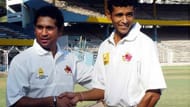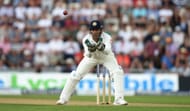
The 11th edition of the IPL is on and at the time of writing, we are 39 games in. Another dozen games to go until the knock-outs arrive, and then the finals. A two-month gap and the Caribbean Premier League follows, before the Big Bash League Down Under rounds off the year.
Let’s throw the Bangladesh Premier League and the Pakistan Super League into the mix; cast a sideways glance at the Future Tours Programme; try to get excited about the World T20 once every two years and the World Cup every four; and, if possible, factor in the domestic cricket in various countries: when we are done, let us remember to pay our last respects to such antiquated things as cricket calendars.
The past
I do remember a time growing up when one used to look forward to watching cricket matches because there were not too many around. (Many conversations on cricket during this time involved my mother telling me about the Pongal Test at Chepauk – Madras’s own traditional response, perhaps, to the Boxing Day Test in Melbourne – the last of which took place in 1988).
Bilateral matches mattered then because missing them meant not knowing when one would get to watch one’s favorite batsmen or bowlers again. The fans' anticipation and excitement gave context – something that most short-form games these days are denuded of – to those matches. Also, countries had their own cricket calendars, which in most cases did not clash, and which made the preparation of itineraries easier.

Touring teams, consequently, had all the time in the world to acclimatize to foreign environments by taking part in preparatory games, before playing the centerpiece Test and/or one-day series. Often, these games also served as early exchanges between competing teams at the beginning of long series, and featured marquee players.
Teams, for example, were quite likely to encounter a couple of international players from England or some other country every time they played a county game on a tour of the British Isles. Elsewhere, too, internationals had the habit of turning up for tour games against visiting sides to exert psychological dominance over the opposition or to recover lost form: in one such game in 1998, Sachin Tendulkar stroked his way to 204 for Bombay against Australia, before producing a sublime and match-winning 155 in the Chennai Test a week later.
The present
All that though is in the past. Today, players themselves do not seem too keen on playing tour matches, and it is not difficult to see why. Every match takes time and what with too much cricket being played anyway, and so much of it compensated monetarily, canceling non-international games (and occasionally a whole Test match) is seen as a pragmatic thing for it reduces the length of a tour.
Such cancellations have probably had a deleterious effect on the quality of cricket (particularly Test cricket) that teams play in different conditions, however, as evidenced by the fact that most teams these days are virtually invincible in familiar conditions and wretched in alien ones.

Nor is the skewness of team performances home and away the only backlash of too much cricket. If fans feel an inchoate sense of ennui on account of it, players experience something decidedly more tangible. There are more injuries to deal with, and there is less time in which to recover from them. There are probably more psychological battles to be fought, and away from one’s family, in lonely hotel rooms and across flights and airports.
Careers in the game are shortened as a consequence, forcing players to take in as much of/from the sport as they can while they can. Franchise-based cricket has made this possible, transforming cricket into a golden goose which lays the platinum eggs spawning opportunity, money, and popularity.
The price of platinum eggs
The eggs come at a price, though, as such things do; and, in general, the unsuspecting seem to pay more for it. It is paid by local cricket administrators in those countries whose traditional domestic seasons, which take into account factors such as weather, clash with popular leagues. It is paid by those who manage certain national cricket teams, for their coffers cannot reward players the way franchise-based tournaments do. It is paid by fans in countries like Sri Lanka, which is forced to schedule matches during the monsoon season, and the West Indies, whose cricketers are among the most recognized and sought-after freelancers in the game.
It is, at some level, also paid by those who do not toe the popular line when it comes to – what are essentially – internationalised domestic leagues.

Cricket has always appealed to the pacifist in me because of the way in which it has blended the new with the old. Technology has been embraced, but the umpire is still the custodian of the game on the field; a certain natural bend in the arm is tolerated but ball-tampering is not; T20 fetches more eyeballs, indeed, but Test cricket remains a pinnacle for many (both fans and players alike); and sympathy and compassion exist in the game alongside gamesmanship, as players’ reactions to dangerous bouncers, especially in the immediate aftermath of Phillip Hughes’ death, attested.
In not bridling the golden goose of franchise-based cricket, however, one feels that cricket might have missed a trick. Only time will tell whether the game can recover from this lost opportunity and make itself healthy, fun and meaningful again for everyone involved.
Follow IPL Auction 2025 Live Updates, News & Biddings at Sportskeeda. Get the fastest updates on Mega-Auction and cricket news
